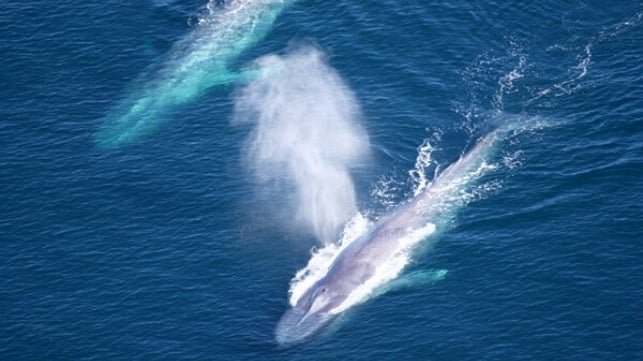Protecting California’s Whales: How the Shipping Industry is Making a Difference
California’s coastline is an ideal habitat for whales, and the shipping industry is taking proactive steps to keep it that way.
In partnership with NOAA and a constellation of local stakeholders, most major ocean carriers have agreed to slow down to 10 knots or less in seasonal speed reduction zones stretching from Point Arena in the north to Los Angeles in the south. By participating, liners reduce ship strike risk to endangered whales, underwater noise, greenhouse gas emissions and air pollution. A NOAA-sponsored program, Protecting Blue Whales and Blue Skies, encourages and verifies participation – and recognizes shipowners for their contributions to environmental protection.
Interview with Program Leaders
To learn more, TME recently spoke with two of the program’s leaders, Rachel Rhodes of UCSB’s Benioff Ocean Science Laboratory and Jess Morten of the California Marine Sanctuary Foundation. They provided insights into the initiatives being undertaken to protect California’s coastal environment and how companies can join in the efforts.
How Your Company Can Contribute
Companies looking to contribute to the protection of California’s whales and coastal environment can participate in the speed reduction zones and follow the guidelines set forth by NOAA. By slowing down ships and reducing the risk of ship strikes, companies can play a vital role in preserving the marine ecosystem.
Additionally, companies can engage with programs like Protecting Blue Whales and Blue Skies to receive recognition for their environmental efforts. By working together with stakeholders and government agencies, the shipping industry can make a meaningful impact on the conservation of California’s marine life.
Listen to the full interview with Rachel Rhodes and Jess Morten below to gain further insights into the initiatives and opportunities for companies to get involved in protecting California’s whales and coastal environment.

